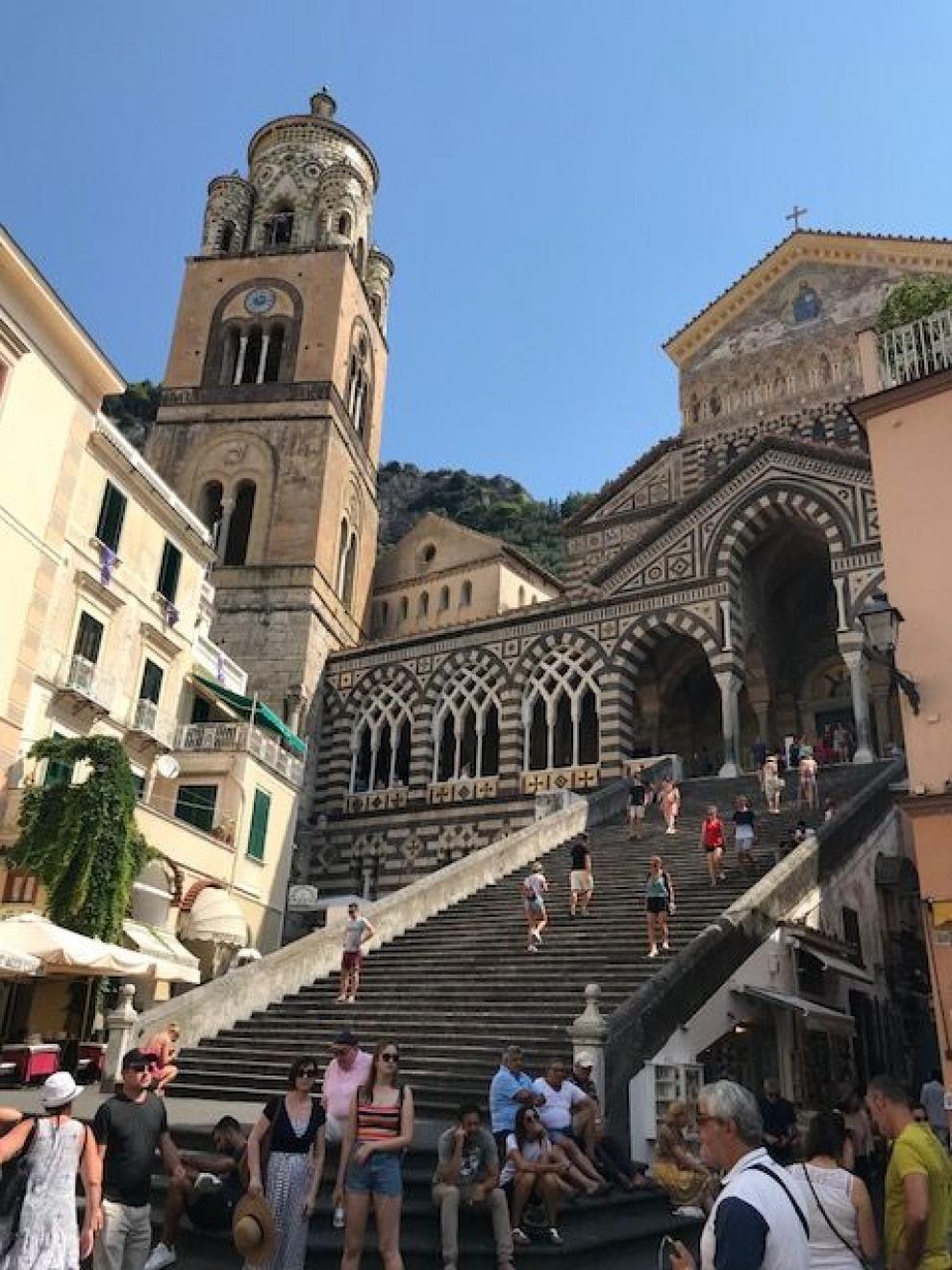Thessaloniki gets ready for its metro launch in November
The underground rapid transit lines have been under construction for almost two decades due to various project delays
 TheMayor.EU logo
TheMayor.EU logo 
Amalfi held importance as a maritime power, trading grain from its neighbours, salt from Sardinia and slaves from the interior, and even timber, in exchange for the gold dinars minted in Egypt and Suria, which it used to buy the Byzantine silks that it resold in the West. Grain-bearing Amalfi traders enjoyed privileged positions in the Islamic ports. The Amalfi tables (tavole amalfitane) provided a maritime code that was widely used by the Christian port cities. Merchants of Amalfi were using gold coins to purchase land in the 9th century, while most of Italy worked in a barter economy. In the 8th and 9th century, when Mediterranean trade revived it shared with Gaeta the Italian trade with the East, while Venice was in its infancy, and in 848 its fleet went to the assistance of Pope Leo IV against the Saracens.
An independent republic from the 7th century until 1075, Amalfi extracted itself from Byzantine vassalage in 839 and first elected a duke in 958. It rivalled Pisa and Genoa in its domestic prosperity and maritime importance before the rise of the Republic of Venice. In spite of some devastating setbacks it had a population of some 70,000 to 80,000 reaching a peak about the turn of the millennium, during the reign of Duke Manso (966–1004). Under his line of dukes, Amalfi remained independent, except for a brief period of Salernitan dependency under Guaimar IV.
In 1073 the republic fell to the Norman countship of Apulia, but was granted many rights. A prey to the Normans who encamped in the south of Italy, it became one of their principal posts. However, in 1131, it was reduced by King Roger II of Sicily, who had been refused the keys to its citadel. The Holy roman Emperor Lothair, fighting in favour of Pope Innocent II against Roger, who sided with the Antipope Anacletus, took him prisoner in 1133, assisted by forty-six Pisan ships. The Pisans, commercial rivals of the Amalfitani, sacked the city; Lothair claimed as part of the booty a copy of the Pandects of Justinian which was found there.
In 1135 and 1137, the city was taken by the Pisans and rapidly declined in importance, though its maritime code, known as the Tavole amalfitiane, was recognized in the Mediterranean until 1570. A tsunami in 1343 destroyed the port and lower town, and Amalfi never recovered to anything more than local importance.
In medieval culture Amalfi was famous for its flourishing schools of law and mathematics. Flavio Gioia, traditionally considered the first to introduce the mariner's compass to Europe, is said to have been a native of Amalfi.
Source: Wikipedia
Amalfi is a town and municipality in the province of Salerno, in the region of Campania, Italy, on the Gulf of Salerno. It lies at the mouth of a deep ravine, at the foot of Monte Cerreto, surrounded by dramatic cliffs and coastal scenery. The population is around 5,100.
Amalfi is the main town of the coast on which it is located, named Amalfi Coast (Costiera Amalfitiana), and today is an important tourist destination together with other towns on the same coast, such as Positano, Ravello and others. Amalfi is included in the UNESCO World Heritage Sites.
Source: Wikipedia
The Amalfi Coast is known for its production of limocello liqueur as the area is a known cultivator of lemons, known as sfusato amalfitano in Italian, which are grown in terraced gardens along the entire coast between February and October.
Amalfi is also a known maker of a hand-made thick paper which is called bambagina. Other renowned local products are a particular kind of anchovies (alici) from Cetara, and the colorful handmade ceramics from Vietri.
Source: Wikipedia

Amalfi occupied a high position in medieval architecture. Its cathedral of Sant'Andrea (Saint Andrew, 11th century), the campanile, the convent of the Cappuccini, founded by the Amalfitan Cardinal Pietro Capuano, richly represent the artistic movement prevailing in Southern Italy at the time of the Normans, with its tendency to blend the Byzantine style with the forms and sharp lines of the northern architecture.
Source: Wikipedia

At the top of a staircase, Saint Andrew's Cathedral (Duomo) overlooks the Piazza Duomo, the heart of Amalfi. The cathedral dates back to the 11th century. Its interior is adorned in the late Baroque style with a nave and two aisles divided by 20 columns. The façade of the cathedral is Byzantine in style and is adorned with various paintings of saints, including a large fresco of Saint Andrew. The bronze statue of Saint Andrew in the cathedral was sculpted by Michelangelo Naccherino, a pupil of Michelangelo.
Source: Wikipedia
Address: Largo Francesco Amodio, 84011 Amalfi SA